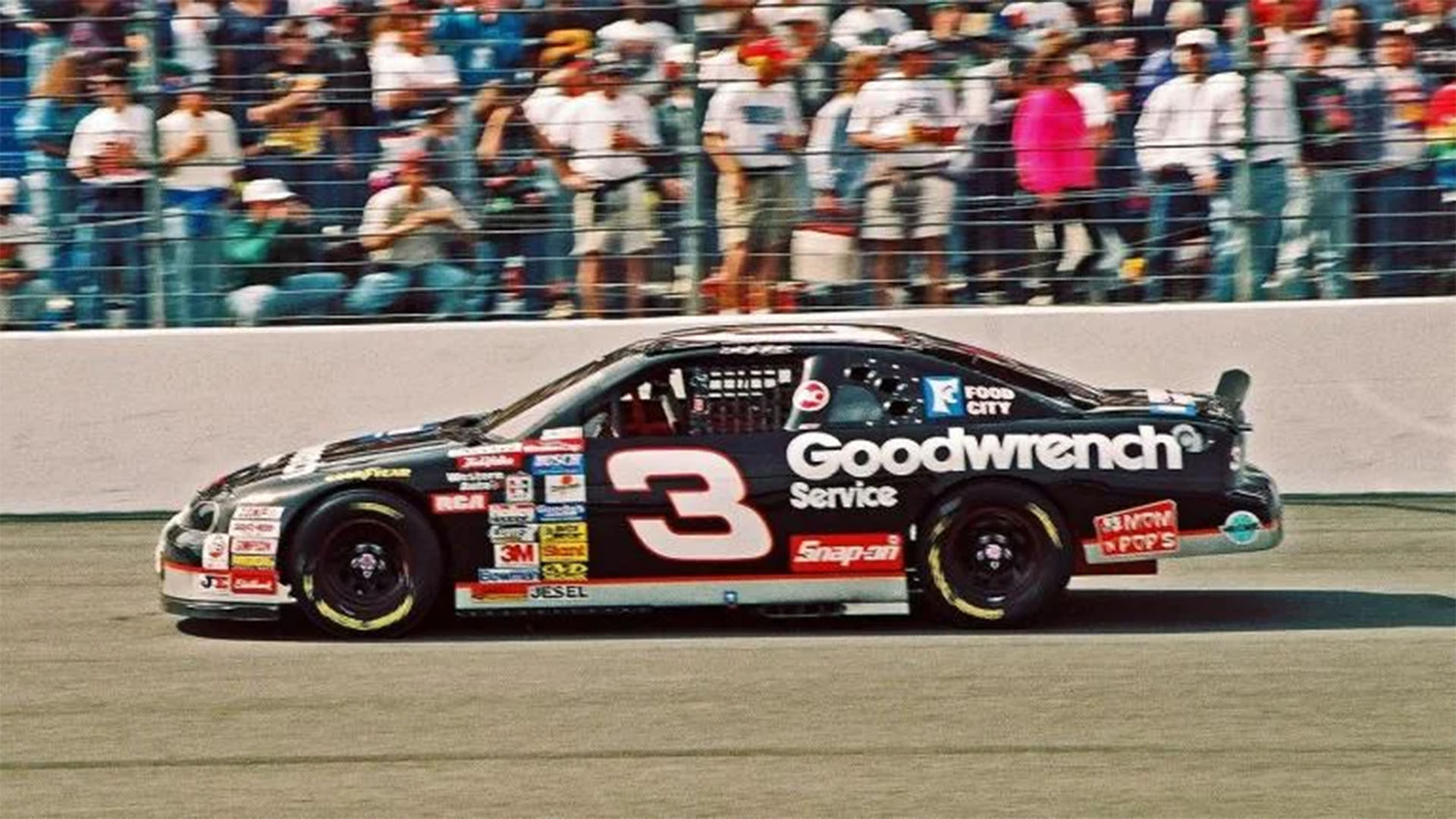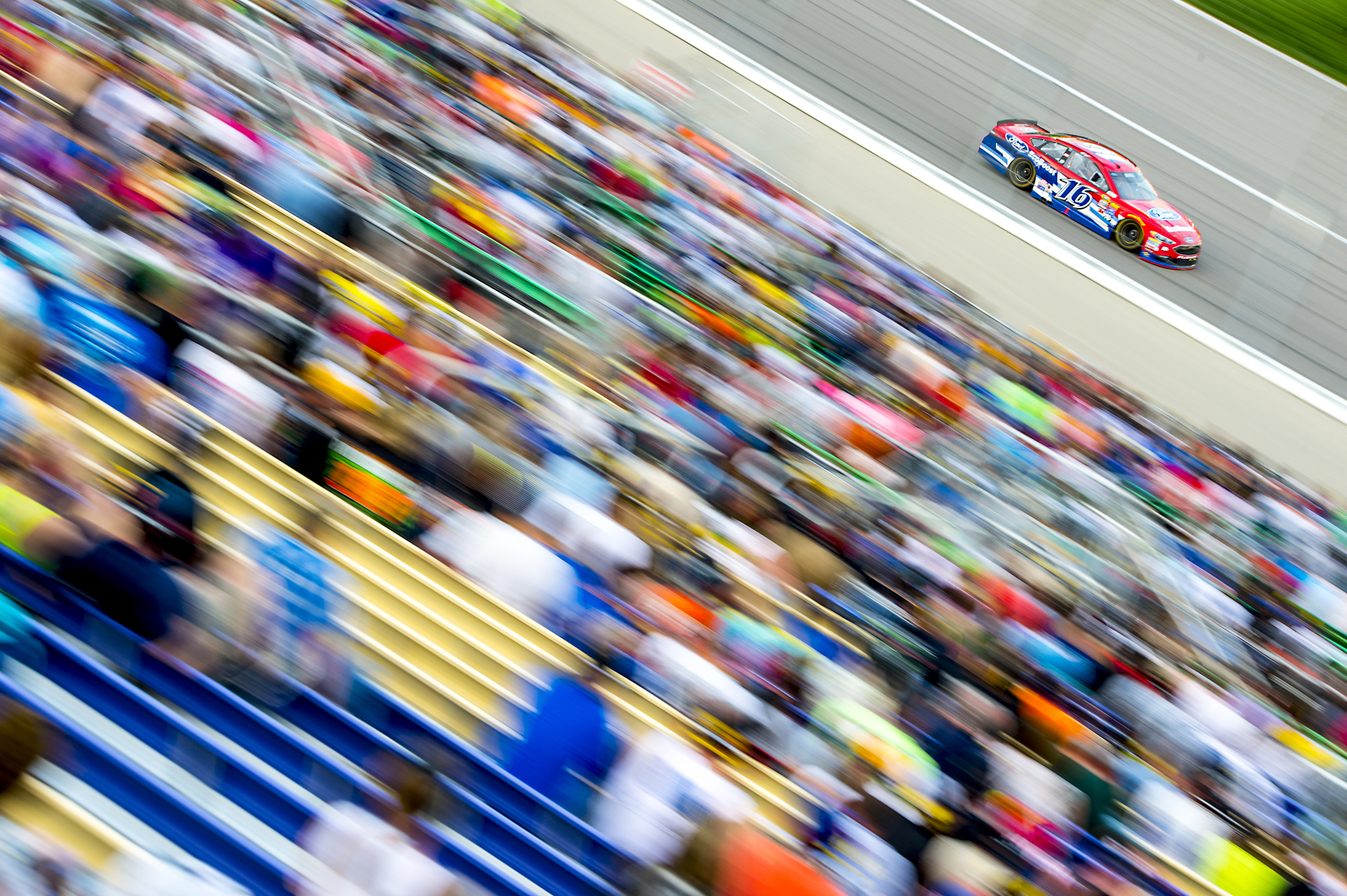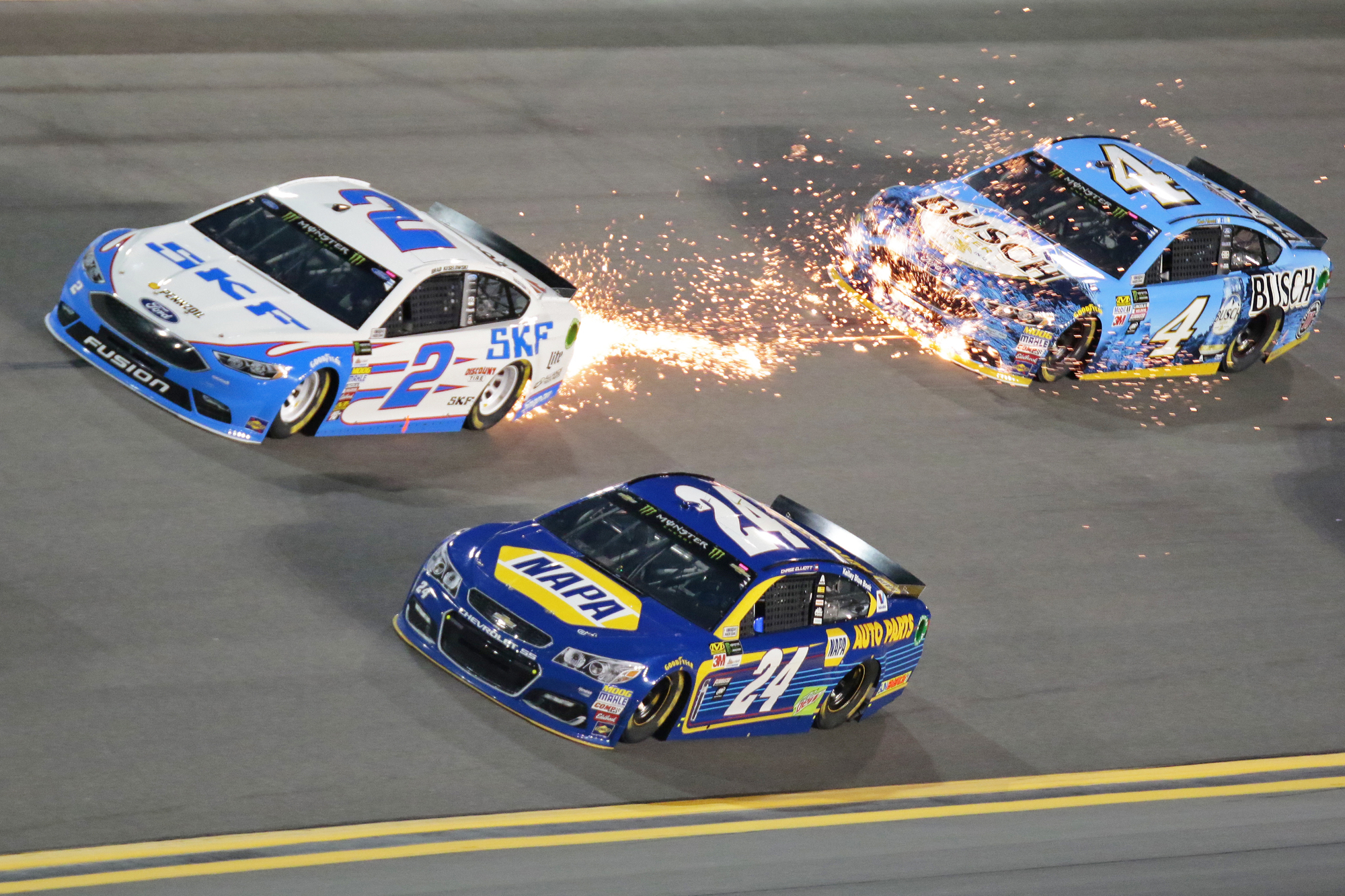NASCAR tires explained
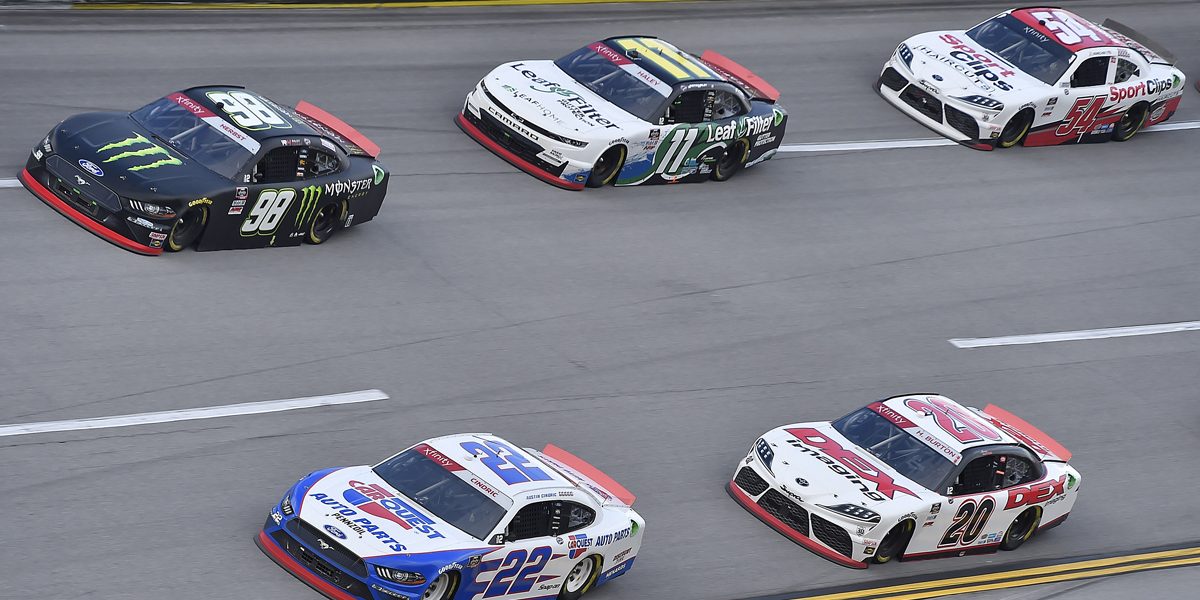

NASCAR tires are designed and constructed for specific tracks and are built to withstand very high temperatures and speed. They also have to be changed in a very short time throughout a race. A tire burst when a car is racing at 200 miles per hour (321.8 kilometres per hour) can be dangerous and disastrous for the driver. That is why NASCAR is also involved in the research and manufacturing process of the tires. The testing of tires stipulated by NASCAR is rigorous. Only tested and certified tires are used on NASCAR cars in the various series.
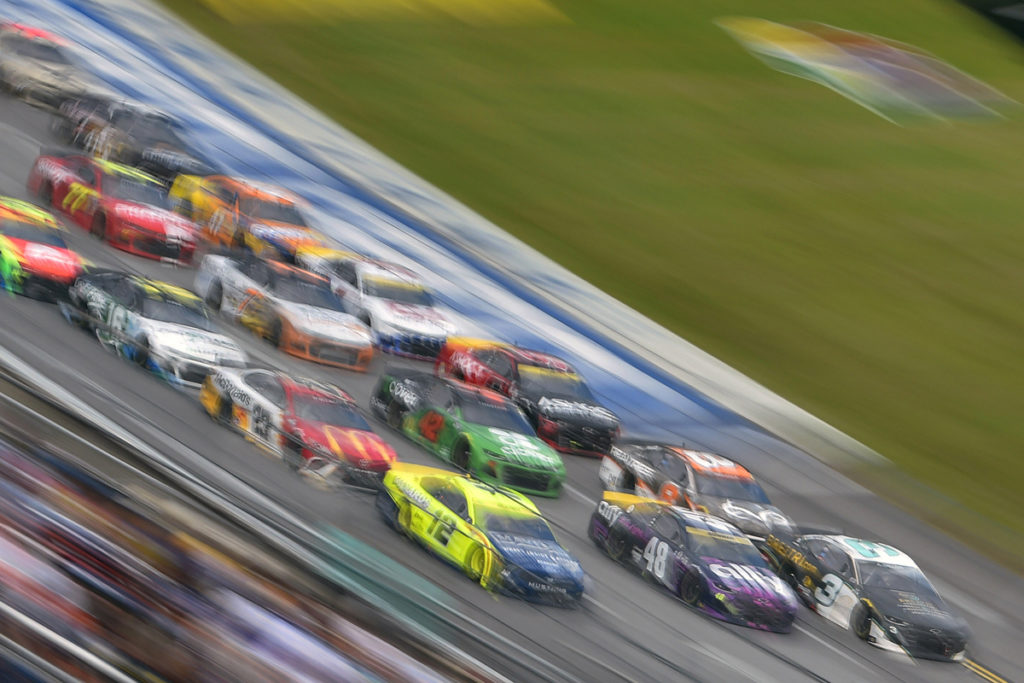
Table of Contents
A short history of NASCAR tires
When NASCAR was launched in 1948, Firestone was the only tire supplier for NASCAR. Goodyear joined the fray in 1954 and was involved in a “tire war” with Firestone. Several incidents led to Firestone’s withdrawal as a supplier for NASCAR cars. That left Goodyear as the sole supplier of tires to NASCAR. In 1978, McCreary Tire & Rubber Company tried their hand at it but was not very successful and withdrew quickly. Hosier was approved as a tire supplier for NASCAR in 1987 and supplied tires for the 1987 Busch National Series.
A tire war ensued between Goodyear and Hosier which led to several blunders by both manufacturers in their bid to manufacture better tires than the other. Goodyear unveiled its new radial tires at the 1989 Daytona 500. When several drivers suffered tire failures while on practice, Goodyear withdrew their tires and drivers switched to Hoosier. Goodyear came back with its radial tires, more durable this time, and Hoosier left NASCAR after the 1989 Talladega 500 citing that the business was economically viable.
Hoosier did return to NASCAR but left after crashes killed Bonnet and Rodney Orr during practice for the 1994 Daytona 500. Since 1997, Goodyear again became the sole tire supplier of NASCAR. It was only in 2020 that Continental Tires joined Goodyear as an official NASCAR tire supplier depending on the series. Goodyear supplies tires to Cup Series, Xfinity Series and Truck Series and Continental supplies NASCAR’s regional touring series. Continental supplies tires by two brands, General and Hoosier. Hoosier tires are only supplied to the Wheelen Modified Tour, while the General brand is supplied to all other series.
Why is Goodyear the sole supplier of tires for NASCAR’s top series?
Goodyear has been associated with the NASCAR Cup Series since 1969. In 1997, NASCAR signed a contract with Goodyear to supply tires for all its series. The contract was renewed in 2017 and again in 2020. Since 2020, Goodyear will be supplying tires for the top three series till 2022. Goodyear takes the production of tires seriously and works in close coordination with the NASCAR officials as well as the racing teams.
Goodyear is not worried about the profits it makes from the tires supplied to NASCAR. Rather it basks in the limelight provided by having its tires on NASCAR cars throughout the year. Its brand is exposed to its potential customers, which are the NASCAR audience, via NASCAR cars. That improves its annual tire sales year on year. There is no doubt that Goodyear does get handsome returns from supplying tires to NASCAR. Goodyear’s hi-tech plant at Akron, Ohio, manufactures at least 100,000 tires solely for NASCAR per year.
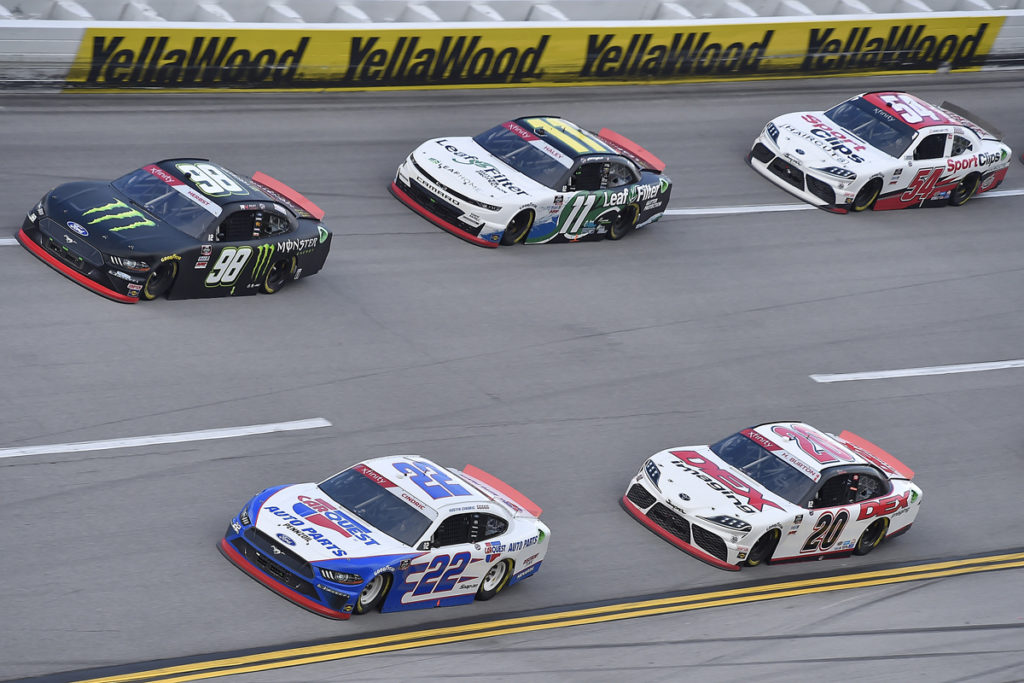
What factors are considered when manufacturing NASCAR tires?
Many factors are considered when constructing a NASAR tire. The geometry of the track, length, banking of the track and weather comes into the reckoning. The selection of the tread compound will depend on the characteristics of the surface of the track and the type of weather prevailing at the time. The construction of tires for racing cars on ovals gets even trickier. Because of the uneven wear on the tires, the right-side tires are constructed substantially differently from the left side ones. The tires have also got to perform on the multitude of cars that race in NASCAR. The tires are constructed track and many times, car specific.
All the components of the Goodyear Racing Eagle, from the beads to the side walls are made in-house. The tires are put together one part and a layer at a time and are handcrafted. The person that assembles the tire has the privilege to put a sticker with his name on the inside of the tire. There is extensive quality checking of the tires before they are supplied to the teams. Every Goodyear employee that puts together a NASCAR tire is aware of the responsibility he carries. Even the slightest flaw can result in a loss of life.
Goodyear is the largest sponsor of NASCAR and understandably so. The viewership of NASCAR is second only to the NBL and keeps Goodyear’s brand in the limelight every year of the day. Goodyear is the most recognised brand on NASCAR cars helping them improve their domestic tire sales. It is a win-win partnership for both Goodyear and NASCAR.
What are a tire’s treads?
The grooves in a tire surface touching the tarmac and the tread of a tire is often confused with each other. The layer of a tire in contact with the racing surface is the “tread” of the tire as a whole. The indentations in the thread are called “grooves”.
NASCAR tires are built bald with no grooves in the part touching the surface of the track. Grooves are not the tread but are in the tread. The grooves in the tire are called patterns or tread patterns. A NASCAR car tire has a full tread without any grooves. This gives the tire and the car more grip and helps prevent the car from skidding out of control on turns. NASCAR tires are called skids as they have no grooves in their treads. In a racing car, the more the surface area a tire has in contact with the surface, the better the grip the tire and the car has.
Goodyear Racing Eagles are built to last one fuel stop. It means the tires on a car are just nearing their useful life as the car stops for a refuelling stop. That helps race teams save time and money by not having to change unspent tires on fuel stops. It is for the driver of the car to judge whether it is worth stopping for refuelling and changing tires than getting ahead of the competition. As will be seen later, sometimes drivers prefer to go with worn tires rather than changing to brand new ones.
What are the components of a NASCAR tire?
Goodyear constructs NASCAR tires with certain components that are unique to Goodyear Racing Eagles. These components are manufactured in-house with certain additives that help in increasing the tires’ abrasion resistance, durability and strength. These components are listed from the rim to the tread of the tire which is in contact with the track surface.
- Apex: The apex is also called a filler and acts as a cushion between the rigid bead and the flexible inner body of the tire. The apex controls the firmness, stiffness or rigidity of the tire. The apex mates against the bead.
- Bead: The bead is the part of the tire that comes in contact with the rim. Beads are inflexible, inelastic high-tensile steel bands enclosed in a rubber compound. They are coated with special alloys to protect them from corrosion. Beads provide the mechanical strength to fit the tire to the wheel. Racing Eagles can have more than one bead depending on the tire and the track.
- Carcass Piles: Carcass piles or sidewalls give the tires their load-carrying capacity, they are made from extruded rubber with additives and are considered as the back and muscles of the tire.
- Belt Package: Tire belts are a layer of steel cords encased between two sheets of rubber. Being inelastic, belts give strength to the tire while allowing it to remain flexible. Placed between the carcass piles and the tread, they give the tire its flat footprint on the track.
- Inner Liner: The inner tube is made from calendared halo butyl rubber sheet. Various additives are added to the rubber to make its air permeability very low. The inner liner ensures that high pressure is maintained inside the tire without the inside tube. This gives the driver enough time to drive to his pit stop in case of a puncture.
- Tread: Tread is the thick extruded compound that is in contact with the track. Tread provides the grip that the car needs. Tread compounds for a NASCAR tire are chosen after taking into consideration the geometry, surface, banking of the track and the prevalent weather. The tread compound also varies from car to car.
Nascar tires go through a special heat treatment process, called curing. This process helps the tire to better withstand the stress and high temperatures generated by its contact with the track and by the brake pads. Each tire constructor (technician) that assembles a tire is proud of his work and attaches a sticker on the inside of the tire that bears his name. That name is referred to by the departments that test and inspect the tires.
Tested and inspected NASCAR tires have a sticker attached to them on the outside of the tire These stickers contain all the data including the tires batch number, tire code, spring rate etc. This data helps the race team predict the behaviour of the tire when racing. Racing teams believe that tires manufactured in one batch will perform more consistently than those coming from different batches. A lot of research and hard work goes into the manufacturing of a NASCAR tire. After the tire is constructed it goes for testing.
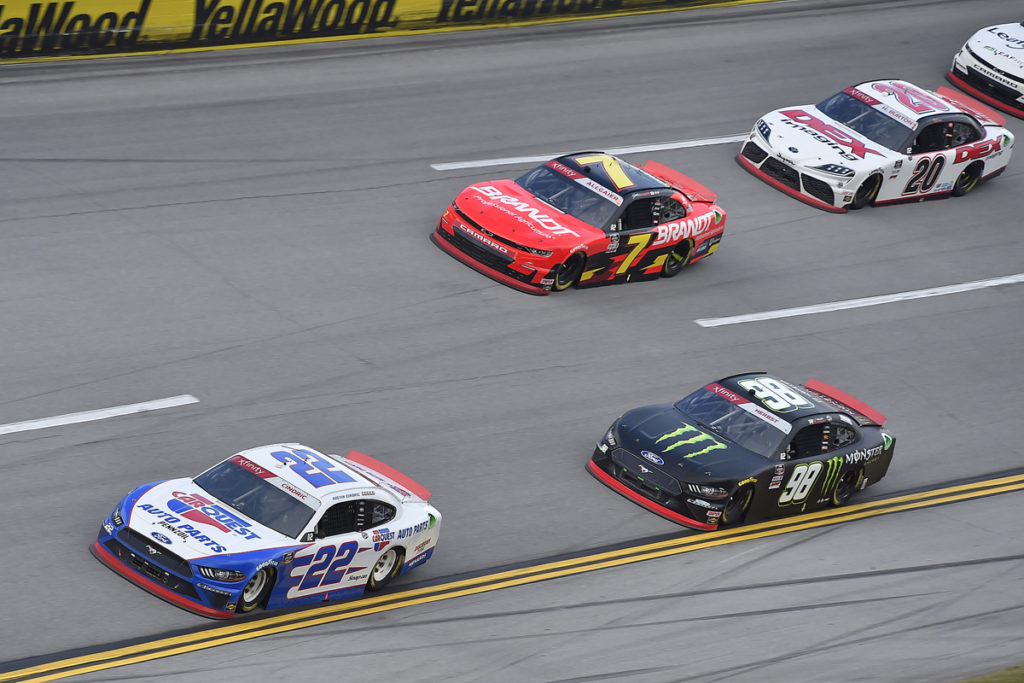
How is a NASCAR tire tested?
The process of NASCAR tire testing is vouched for by Goodyear and NASCAR teams of engineers. Goodyear and NASCAR select drivers from four teams that will participate that season in one or more of the three top NASCAR races that season. The drivers are accompanied by their cars and race teams. The engineers will record the tire temperatures and other parameters using telemetry at different times during racing. The data is taken back to the analysing laboratory to check the suitability of the compound used in the thread.
A compound is a rubber polymer used in the various layer of the tires. The most important compound is the one used in the tread of a tire. This compound has to withstand the heat generated from friction with the track surface as well as from the brake pads. Although all compounds used in tire building are equally important, the other compounds are usually predetermined. The tread compound has to last from one refuelling to the next as well as almost wear out by the time the driver goes for a change of tires. That ensures that the tire is fully used giving the team value for money.
Different racing tracks have different characteristics. Tires have to be built specific to the tracks and have to last one refuel run. The chemists at the laboratory decide which compound is most suitable for which track. Tires suited for rougher tracks might not find good traction on smoother tracks. For a race on an oval, the tires on the right side of a NASCAR car will be bigger than on the left. That is because, with the cars always turning left, the right-hand side tires wear out more as compared to the ones on the left. When a car stops for refuelling, both tires have to ideally be the same size.
How do NASCAR teams get tires for testing?
Earlier, NASCAR teams used to purchase tires outright from Goodyear. Some of the well-heeled teams bought more tires than they used for racing. These spare tires were used to test cars and their performance throughout the year. This practice gave an unfair advantage to the well off teams as compared to the rest. NASCAR spotted this and decided to take action. From the 2006 season, all teams are leased tires by Goodyear, prompted by NASCAR, for each race. This evened the playing field for all teams.
Goodyear leases 120 tires per team for the Truck Series, 160 tires for the Nationwide Series and 200 tires for the Sprint Cup Series. These tires are for testing on non-sanctioned tracks. All these tires are embedded with micro RFID chips inside the tire. These are radio frequency chips that allow Goodyear and NASCAR to monitor individual tires. All the used tires have to be returned to Goodyear after use. These used tires are also analysed with the collected data for performance.
Before the era of leasing tires, teams used to feel that a session of testing tires for Goodyear was a nuisance. But since then, as teams get only a limited allotment of tires for testing, teams are eager for a testing session. NASCAR has prescribed limits on the number of tire tests a team can conduct per year. Tire testing is as important in NASCAR racing as testing a car and the teams are fully aware of that.
How do NASCAR teams get ready for a race?
From the research and testing done before, Goodyear and NASCAR decide on which tires to use for racing on a particular track. They might decide to use the same tires on more than one track sharing similar characteristics. Tires form an important component of a NASCAR car. No matter how good a car a team has, without good tires, all the efforts of the racing team will go down the drain. A NASCAR racing team is comprised of specialists and engineers from aerodynamics to tires. It is for the tire specialists and engineers to study the behaviour and wear of the tires supplied, along with the driver.
Once supplied, the teams cannot modify tires in any way. They are allowed to swap tires with other teams. This may be done to ensure that a team has tires from the same batch. The teams are only allowed to adjust the tire air pressure to one that suits their driver and the car. Tire air pressure can make a big difference in the handling of the car. All the tires are supplied on lease and Goodyear mounts and align the tires using a special tire mounting machine. Tire specialists continuously monitor the tires for wear.
The practice sessions start on Friday and most teams practise on that day. The qualifying follows soon after. Drivers in NASCAR usually return their fastest lap on the new tires. The second lap will be a lot slower when the driver checks the handling of the car at various speeds and on turns. On tracks like Daytona and Talladega, which are ovals with good banking, cars don’t need too much tire grip. On these tracks, drivers will often speed through both laps.
Goodyear engineers monitor the tires for wear during the practice sessions. They might advise the team on various parameters of the tire from the findings. If they find that the tires are not wearing evenly they will report the problem to NASCAR. Camber is the excessive wear of the inside of a tire. Too much camber can lead to a tire blowout at high speed which can be very dangerous. The engineers may also recommend a tire pressure to be used. In rare cases, Goodyear may even decide to change all tires with new sets of tires.
How do the NASCAR teams manage tires during a race?
NASCAR teams have access to telemetry during the practice and qualifying sessions where they can monitor the performance of the car and tires. They use this information to give inputs to Goodyear and vice versa. But during a race, NASCAR teams are strictly barred from using telemetry. Goodyear and NASCAR on the other hand, monitor the tires using both the telemetry and the radio chip embedded in the tire. The teams use radio communication with the driver and inspect the tire during refuelling stops to monitor the tire.
Drivers mostly prefer new or sticker tires during a pit stop because new tires give the drivers better lap times. Rarely do drivers choose to use scuffed or slightly worn tires. Scuffed tires or scuffs are tires that have only been used only for one or two laps. Drivers will choose them when they are looking for a good grip for a few laps. Such a need arises when the driver has had a late start or there are only a few laps for the finish of the race. Scuffs are also used when Goodyear supplies excessively hard tires for a race, which is very rare.
Goodyear tries to improve the quality of RACING Eagles continuously. They build their tires to last a “stint”. A stint is a distance a tire can be used for racing before it wears off. The stint of a tire depends on the surface and length of the track. A stint is usually the distance a NASCAR car travels between fuel stops. NASCAR cars frequently change tires and sometimes a team may use as many as 12 sets or more. Stints also vary for stock cars and trucks. NASCAR calls a stint, a fuel run and may vary between 35 to100 laps depending on the length of the track.
How often do NASCAR cars change tires during a race?
Teams change tires throughout a NASCAR race usually during fuel stops. After the tires on a car are changed, the worn tires are closely examined and the findings are noted. A tire specialist uses a torch to burn the built-up tread to expose three holes in the tire called wear pins. A measurement of the depth of the wear pins tells the specialist how much the tire tread has worn out. Based on this information, the crew chief will decide what adjustments have to be made on the next pit stop to make the car handle better. The chief will also give the driver an idea of how many laps he can go before a tire change.
The tire specialists, engineers and the crew chief continuously exchange information with the driver about the findings on the pit stops. Tires are the fastest and easiest way to understand the behaviour of the car. The wear on all four tires, when compared tells the team how stably the car is racing and they inform the driver accordingly. A tire with more tire pressure will give a lesser grip than a tire with lower air pressure. The team discusses with the driver and adjusts the tire pressure accordingly on the next pit stop.
Tires are the most vulnerable part of a race car maybe because it is designed to last no more than a stint. This is a great cause of concern for NASCAR, Goodyear, the teams and the driver. Most punctures are caused by the debris strewn on the tracks from bumps between cars. Punctures may also be caused because of the cuts on the sidewalls of the tire from contact with another car. A tire puncture at high speed will cause a tire to burst and will be shredded to bits. But NASCAR drivers have the inner liner on which they can rely to safely reach their pit.
How do NASCAR tires get worn and heated?
NASCAR tires are in constant contact with the track when racing at 180 miles per hour (290 kph) or more. The friction with the tarmac heats the tires which wear out more rapidly than if they were travelling at a slower speed. The heated rubber comes off the tires in small, melted rubber balls and spreads across the track. These rubber balls are called “marbles” in NASCAR parlance and are a great threat to drivers. The rest of the rubber gets stuck to the track and in its grains. This stuck rubber is helpful to drivers as it affords the tires a better grip with the track.

When watching a live NASCAR race, viewers will see a black line along the edge of the track. This line is the worn rubber from the racing tires stuck to the track and piles up along the side. NASCAR drivers call it the groove. They find driving on this groove much easier than on the other parts of the track. Marbles, on the other hand, accumulate on the outside of the track, especially on the turns. Driving on marbles is as slippery as stepping on marbles and gives the car tires no grip whatsoever. This can lead to the car sliding out of the track and crashing.
Tires also experience heat cycles throughout the race. Experienced drivers make sure that their tires heat evenly till the end of the race. An unevenly heated tire will wear more on the hotter side and develop a camber that renders the car unwieldy. Heated tires also grow harder reducing the grip of the tires on the track. Heat is generated from friction with the track as well as from the brake pads. On faster tracks like Daytona and Talladega, drivers draft whenever they can and save their tires for the last stint to the finish.
Conclusion
From the above discussion, it is easy to see what research and efforts go into NASCAR tire manufacturing. It also highlights the importance of the tires as a component of a NASCAR racing car. NASCAR drivers and racing teams take great care of their tires when racing. A badly worn tire can cost the driver the race with additional pit stops or a blowout. A NASCAR racing car is as good or fast as its tires let it be.
You may also be interested in: What are the safety features in a NASCAR car?
For more racing action, visit F1 Chronicle.






